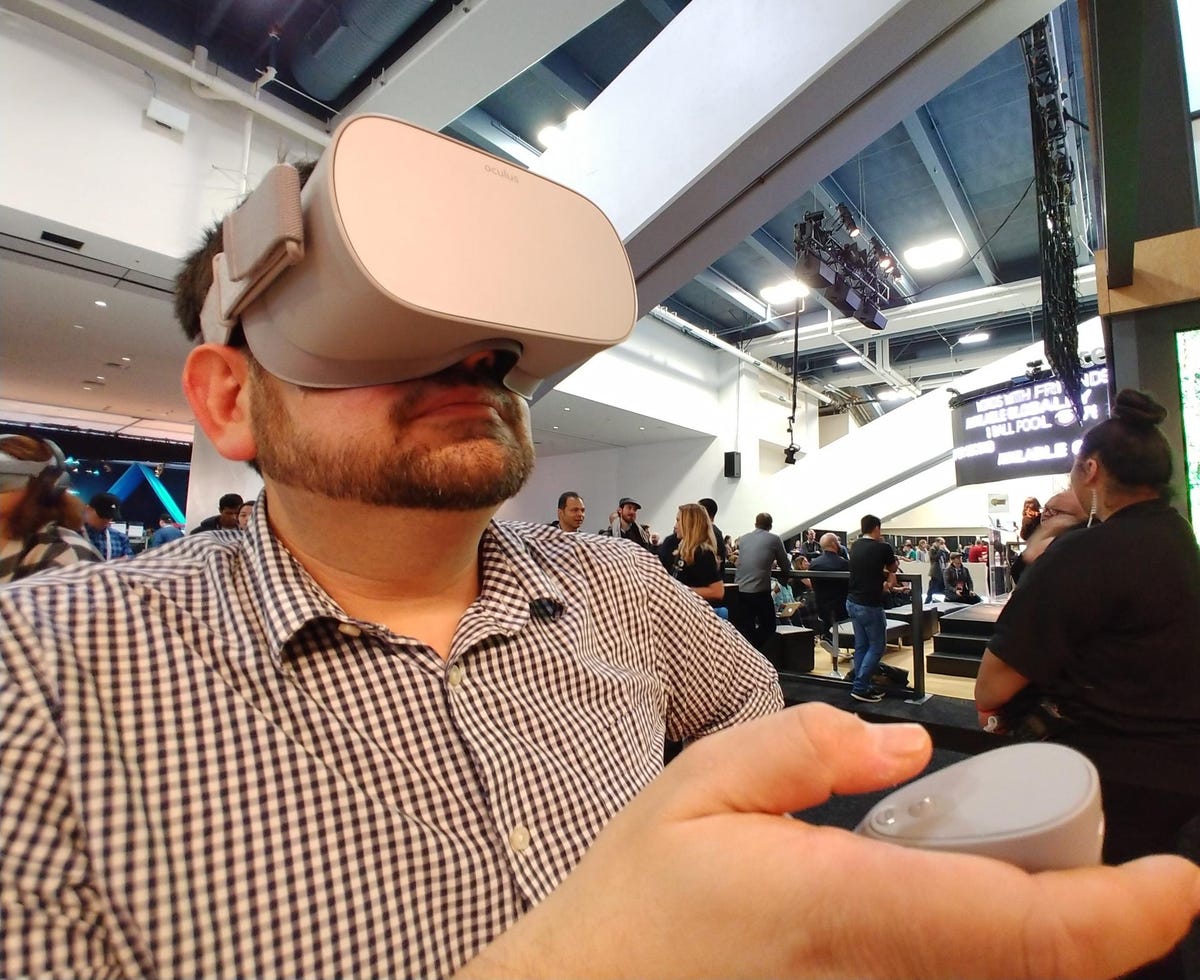
For $199 (about £150 or AU$255 converted), the Oculus Go could possibly be -- dollar for dollar -- one of the best VR headsets yet. It's totally wireless, and works on its own, with no need to insert a phone or tether to a PC.
That means it's not particularly powerful, but it also means it's not bogged down with a lot of phone notifications or software bloat.
At GDC 2018 in San Francisco, journalists got to try it for the first time. Here's a quick tour.
Disclosure: Sean's wife works for Oculus parent Facebook as a business-to-business video producer.
As you can see, it's a partly plastic, partly fabric headset -- like a cross between Google's Daydream View and the Samsung Gear VR. I wouldn't say it's as comfy as the full-fabric Daydream, but it felt fairly light and didn't leave marks on our faces when we took it off.
That's partly thanks to the extremely cushy, silicone-rubber-style seal, which felt like a little pillow against my face. (It's filled with foam for just that reason.) It did pick up some of our facial oil, but it seems easier to clean than fabric liners. You can just wipe it away.
The headset's also got a soft fabric headband that works in a few different ways: hook and loop fasteners to adjust, springy elastic like ski goggles for a bit of tension and a pocket in the back you place beneath the back of your head to balance the weight. (That last one's becoming increasingly common in VR headsets.)
You get a 3.5mm headphone jack, and a Micro-USB port for charging. There are also built-in speakers.
Here's the power button up top, and the volume rocker.
It comes with a single motion controller with a trigger, touchpad, home button and menu button.
Both the headset and controller have three degrees of freedom, which means you can rotate them in any direction, but not walk around, lean or reach out and grab things.
Those would require what's known as positional tracking, which you'll find on the full-fat Oculus Rift, HTC Vive and PlayStation VR headsets, as well as other standalone wireless devices coming this year.
Here's a look inside the headset, where you can see the new lenses -- supposedly better than the Oculus Rift -- and the proximity sensor to turn the screen on and off automatically to save battery life and avoid burn-in.
"We haven't seen this clarity in VR before," said Facebook VR boss Hugo Barra, when Oculus Go was first announced. Having tried them briefly, I'm not yet sure I'd agree, but they did seem pretty sharp.
One last picture of the Oculus Go in action.

